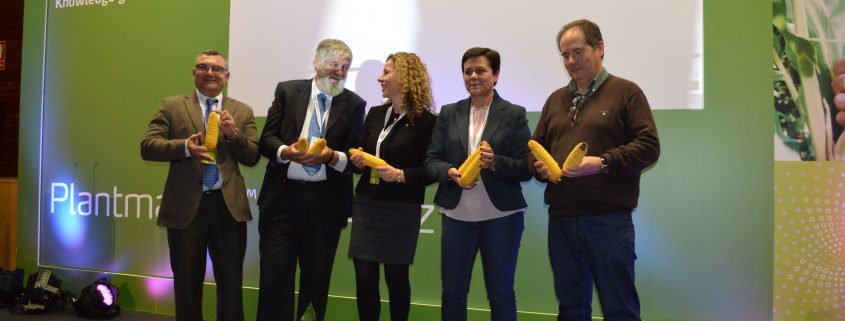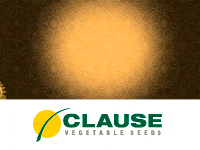Corn is the most widely produced cereal in the world. The market goes through troubled times in which improved efficiency is the key to being competitive. In order to obtain a higher yield in this crop and at the same time seeking higher returns for producers, Yara has launched its PlantmasterTM corn presented the 9th and February 11th in Huesca and Leon, respectively. This document, the result of over two years of work of the international team of Yara, collect the most useful information on nutrition in maize, staple in the diet of millions of people worldwide.
Spain ranks sixth in the ranking of producing countries in Europe. It is a crop with great economic interest in our country and these two days served to bring to the table some concerns that revolve around this crop and tips to optimize handling.
Nutrition is key to increasing efficiency
The launch of PlantMaster ™ Corn took place in Huesca and Leon, two of the main sources of corn producers in Mexico and brought together major players in the sector.
Around 125 participants attended each of the appointments. The first of the conference took place at the Polytechnic School of Huesca -adscrita the University of Zaragoza, while the Superior and Technical School of Agricultural Engineering at the University of Leon hosted the second of dating.
The inauguration of the two events was made by Monica Andres, CEO of Yara Iberian, who thanked everyone for their support and said that this PlantmasterTM is but one example of the commitment of Yara in their eagerness to share their knowledge with sector. Monica Andres pointed out that the maize market goes through turbulent times and that in this context “the sector must seek to optimize the efficiency to be increasingly competitive.”
Barry Bull, agronomic specialist Yara International, was responsible for presenting the document and make a brief review of the role of each nutrient in the cultivation of corn.
Barry Bull said although maize crop may seem easy in handling are some important factors to consider when optimizing their performance. These factors include the depth of planting -óptima around 2 CM.- and -more efficient management of subscriber in initial teething states.
Nutrients one to one
Barry Bull stressed in his speech the importance of nitrogen and its effect on production and increased protein and said it’s essential how the nitrogen is provided being combined contribution nitrate and ammonium forms much efficient only in ammoniacal. Phosphorus stressed that the contribution must coincide in time with Nitrogen and that this nutrient promotes root development so it is essential for optimum plant growth. Finally, potassium intake is key to reducing the effects of damage caused by low temperatures and thus to increase the yield of the plantation. Then Barry Bull reviewed the role of secondary macronutrients and micronutrients in maize but stressed the importance of Magnesium-of which we must take good care levels particularly in soils where there lavado- and micronutrients. The Boro -key for regular filling of the mazorca- and Zinc are particularly important in corn for grain, while Manganese plays an important role in the quality of forage maize.
Barry Bull said that to define the plan subscriber is important to know the type and end use of corn-for-grain or fodder grown as well as the balance of nutrients in our soil and cultivation in order to detect potential imbalances and act accordingly. Barry noted in this regard that it is essential to carry out soil and foliar analysis to develop a plan for efficient subscriber.
Very interesting papers
Both sessions were interesting presentations that helped contextualize the current situation of the sector. In Huesca presentations were given by Francisco Yglesias, purchasing manager Tereos Syral, and Augustine Arino, Professor of Nutrition and Food Science, University Zaragoza.
First came an overview of the situation on the maize market globally and noted the importance of increasing production to meet demand. In this sense Francisco Yglesias noted that our country is the deficit of the EU according to the data of production and consumption for the 2014/15 campaign. Meanwhile Augustine Ariño focused his presentation on mycotoxins and how they affect the corn and thus for animal and human consumption. Ariño Augustine said that their economic importance is affecting around 20% of global crops by reducing the nutritional value of raw materials and food. To reduce the risk of incidence is important to use preventive measures such as good agricultural practices and sampling systems and pollution control. “Proper fertilizing helps reduce the incidence of fungal diseases in cereals,” he added Ariño.
On the other hand, the appointment of Leon attended two experienced professionals. Mariano Nogales, director of the testing station and Characterization of Fertiliser and Seed (EECAS) gave interesting tips for determining the dose of fertilizer and regulate fertilizer in order to optimize the application. Mariano Nogales said in his speech the importance of opting for dust free fertilizers and hygroscopic to prevent caking and get a more optimal and uniform distribution of fertilizer.
Behind him, Maria Hermida, director of the Laboratory of Lalin Mouriscade -dependent Pontevedra- County Council, gave a much more detailed look at how nutrition affects corn on the nutritional qualities of forage and grain. Maria Hermida said it is essential to know the ground where we will deposit the seed and clinched the Bull Barry message about the importance of carrying out soil analysis and foliar. “If we analyze not control, we do not know if we do not control, unless we know we can not make decisions and therefore not able to manage,” said Mary.
Mary put in value the information contained in the PlantMaster™ Corn and thanked Yara because “rarely such a detailed and so graphically on certain aspects information related to plant nutrition, such as the importance of micronutrients for occurs good crop development. ” “When it comes to performance and productivity, it is often not a question of lack of resources but of information. We must help the farmer making him see what your crop needs, “concluded Mary.
Source: Yara








